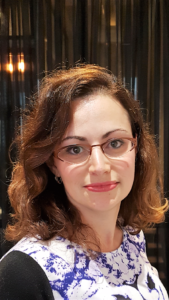How YMM can support you during the COVID-19 pandemic
SUPPORTING OUR COMMUNITY AND CLIENTS
In the wake of community concerns around COVID-19, we’re committed to providing our clients with ongoing support, so that you can continue working on your health and well-being.
WHAT CAN YOU (AND WE) DO TO REDUCE RISK OF INFECTION?
We are committed to ensuring our team are healthy when they are at work. We are equally committed to reducing your risk of exposure to illness while attending your appointments with us.
We are following Department of Health guidelines around hygiene and encourage you to do the same:
- Cough into your elbow
- Throw away used tissues
- Wash hands for a minimum 20 seconds regularly, or use hand sanitiser often
- Stay home if you are unwell
- Follow the guidelines and recommendations set by the Department of Health and self-exclude if you have been to any of the countries with exclusion periods or have been in contact with someone with confirmed or suspected COVID-19. We also ask that you not attend the practice when you are unwell regardless of whether you think this may be COVID-19 or a cold or flu
We are ensuring team members remain at home if they are unwell.
Likewise, we ask that you reschedule your appointments with us at the first sign of ill-health.
WHAT IF MY CLINICIAN IS ISOLATED BUT WELL ENOUGH TO RUN MY SESSION?
Our clinicians are experienced at offering sessions via telephone or video-chat (telehealth). If your clinician is isolated, but well enough to conduct sessions, you will be offered a telehealth consultation.
WHAT IF I’M ISOLATED BUT WELL ENOUGH TO HAVE MY SESSION?
If you need to cancel your appointment due to isolation, you will be offered teleheath options as an alternative to cancelling.
HOW ARE TELEHEALTH SESSIONS CHARGED?
Sessions fees cover the time spent with your clinician. Therefore, we charge our normal fee for telehealth sessions. NDIS self-managed or Plan Managed clients are able to use their funds for phone and online sessions also. Private clients (those who pay upfront, with or without a Medicare rebate), please check with your private health insurer to see if you can access a rebate under these circumstances.
HOW DO I PAY FOR A TELEHEALTH SESSION?
You can pay for sessions via credit card, which is stored in our secure encrypted system (using Stripe with Power Diary), or we can send you an invoice and ask that you transfer funds as soon as possible (within 48 hours).
If you have any questions please call us on 03 9802 4654.
HOW DO I PREPARE FOR ONLINE SESSIONS?
Prior to your appointment:
If you are a new client and haven’t signed our new consent form, our admin team will send you some forms to complete. Please print, sign, and email back to us. You will need to return this prior to your first online session. Your Psychologist will email you an invite confirming the time of your appointment, and information regarding what telehealth platform they will use. If they use Zoom, you will receive instructions on how to use it. Here is a little video that outlines how to join a zoom session https://youtu.be/vFhAEoCF7jg.
If they use PowerDiary, all you need to do is click the link at the time of your appointment. So easy!
Make sure at the time of your appointment, you have a quite, private place, and ideally have a notebook with you, so you can take down any notes, ideas, or insights.
Troubleshooting:
- Make sure that you have a full battery in preparation
- Practice placing the phone, iPad, laptop or computer in a suitable location so that your psychologist can see you
- Make sure the camera and audio are turned on (it is a good idea to practice before your scheduled session time)
If at the time of the session, you aren’t able to connect, we will call you instead!
FAQ ABOUT TELEHEALTH
What if I don’t have the same connection online or on the phone as I do in person?
This is a concern that most of us have had, which is understandable when we are used to face to face interactions. However, most clients report that after a few minutes, and they adjust to the new interface and way of connecting, that video-chat is just as effective! Of course, this may not be everyone’s experience, but it certainly can work under the right circumstances and is better than no support at all.
The first session may be a bit strange and you may be more focused on how the camera is angled or how your voice sounds etc. but once you have settled in, you will likely notice that it feels the same. If it doesn’t, tell your practitioner and work through why and what is happening for you around the connection.
I am not tech savvy, is it complicated?
We use Power Diary (our practice management software) or Zoom (similar to Skype or Facetime, but more secure, check out their privacy policy https://zoom.us/privacy/) and set up the meeting on our end. We then email you a link with any information you need to sign in.
If we login to the meeting and cannot see you online, we will give you a call. That way, if you are struggling to set up, we can help walk you through the steps. Having said that, if your device doesn’t wish to cooperate, we’ll chat over the phone instead.
Benefits
The beauty of telehealth is that you can be in isolation, and still access support! You don’t need to leave the house, and you can even stay in your PJ’s all day if you like (we don’t mind!) Given the current situation with social distancing as a response to COVID19, online therapy could be a game changer for anyone seeking support!
We truly hope that this pandemic is short lived, but in the meantime, we’re here to help.
Please call us on 039802 4654 if you have any other questions.
Best wishes, stay safe, and we hope to see you soon!
From all of us at YMM Psychology.













